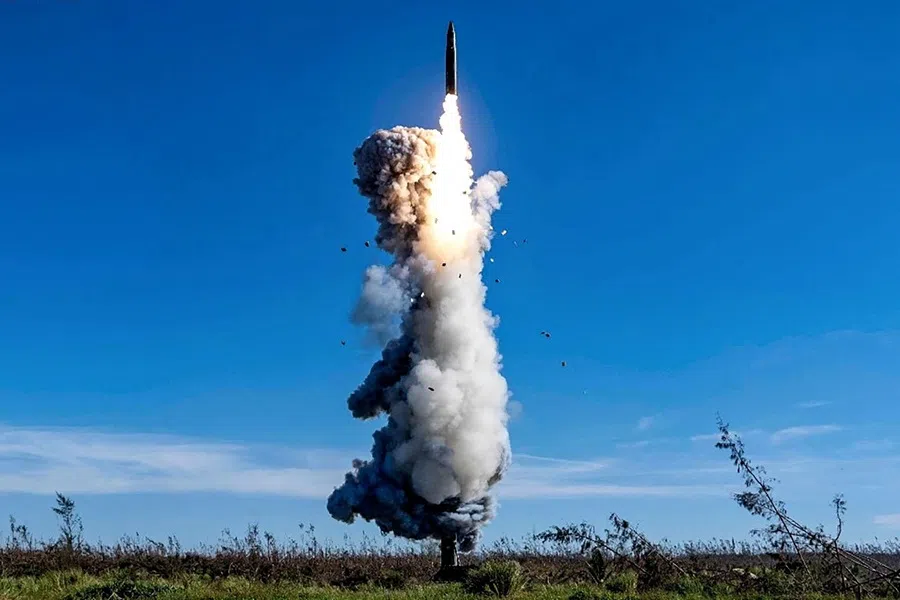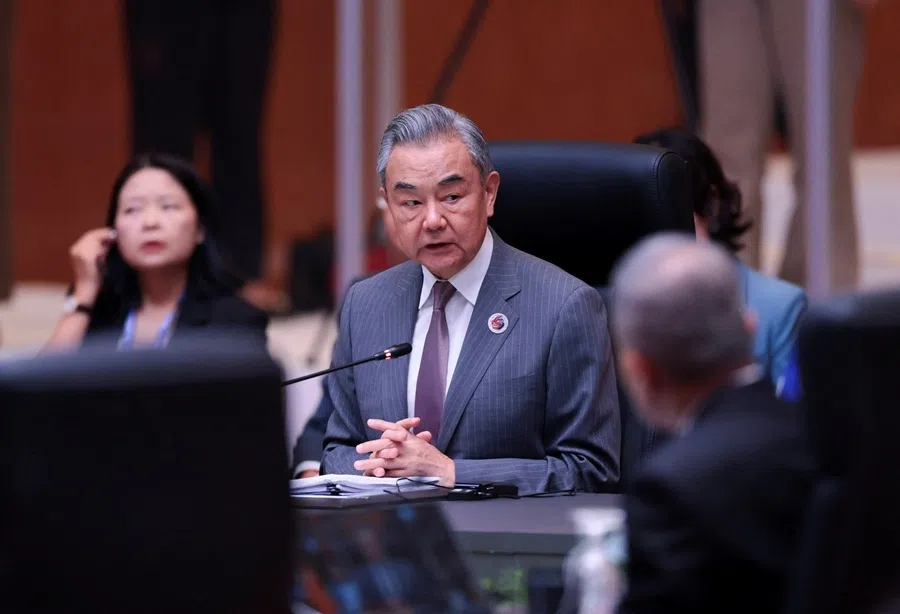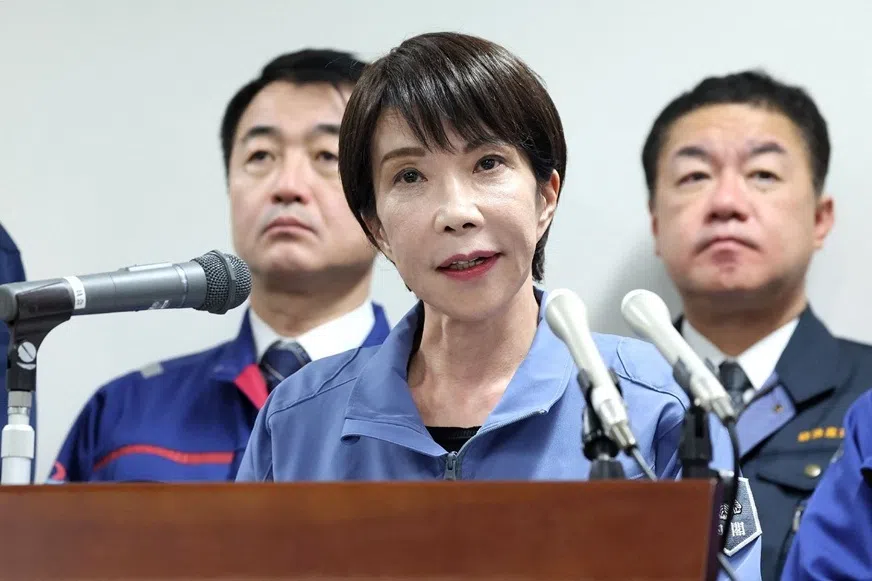China’s SEANWFZ move: A strategic signal in a fracturing nuclear order
China’s readiness to sign the Southeast Asia Nuclear-Weapon-Free Zone (SEANWFZ) Treaty represents a rare moment of leadership in a stalled arms control regime, says academic Hao Nan.

In a time of escalating global nuclear tensions, China’s announcement that it is ready to sign the protocol to the Southeast Asia Nuclear-Weapon-Free Zone (SEANWFZ) Treaty — also known as the Bangkok Treaty — marks a significant moment.
As confirmed by ASEAN chair Malaysia’s Foreign Minister Mohamad Hasan on 10 July, China’s willingness to sign the treaty “without reservation” not only reaffirms its stated commitment to regional denuclearisation but also repositions it as a proactive rule-setter in an increasingly fractured global arms control landscape.
Challenging nuclear double standards.
China’s decision should not be viewed in isolation. Rather, it is a calculated geopolitical move that responds simultaneously to global arms control regime breakdown, US-led nuclear alliances and intensifying strategic mistrust.
More crucially, this step signals China’s attempt to seize the normative high ground in nuclear governance — using multilateral mechanisms like SEANWFZ to reframe its expanding arsenal as part of a responsible nuclear posture, while challenging what it perceives as double standards in Western nuclear policy.
China’s readiness to break this impasse represents a rare moment of leadership in a stalled arms control regime.
The historical context of the Bangkok Treaty underlines its significance. Signed in 1995 and in force since 1997, the SEANWFZ obliges States Parties not to develop, manufacture or otherwise acquire, possess or have control over nuclear weapons, station or transport nuclear weapons, or test or use nuclear weapons.
Furthermore, the Treaty champions two elements that go beyond other existing Nuclear-Weapon-Free Zone (NWFZ) agreements.
The unsigned protocol and China’s bid for leadership
The Zone includes the continental shelves and the exclusive economic zones (EEZ) of the contracting parties, and requires five nuclear weapon states not to use nuclear weapons against any contracting State or protocol Party within the zone of application.
Yet the treaty’s accompanying protocol — designed for the five recognised nuclear-weapon states (P5) to pledge not to use or threaten nuclear force against treaty members — has languished unsigned by all five. China’s readiness to break this impasse represents a rare moment of leadership in a stalled arms control regime. This move is consistent with Beijing’s longstanding “no first use” policy and its support for other nuclear-weapon-free zones (NWFZs).

China has already signed and ratified the protocols to the NWFZ treaties of Latin America (Treaty of Tlatelolco), the South Pacific (Treaty of Rarotonga), Africa (Treaty of Pelindaba) and Central Asia (Treaty of Semipalatinsk). Unlike the US, which signed but never ratified several of these, China has used these treaties to demonstrate alignment with non-proliferation norms — even while modernising its nuclear forces.
Committed to regional restraint
Indeed, China’s expanding nuclear arsenal — estimated by the Pentagon to exceed 1,000 by 2030 — has sparked widespread concerns. But by embracing SEANWFZ now, Beijing aims to shift the narrative: from that of a rising nuclear threat to a cooperative stakeholder committed to regional restraint. The move also acts as a counterweight to US and Western claims that China is undermining strategic stability.
... implementation hinges on trust and political goodwill.
Procedurally, China’s accession to the treaty likely remains subject to two key steps: clarification of legal language around the South China Sea — where prior objections centred on treaty provisions covering exclusive economic zones overlapping with disputed areas — and subsequent ratification by the National People’s Congress. This process may take up to a year, but its initiation alone marks a major shift in regional diplomacy.
Importantly, the treaty’s constraints are largely declarative. SEANWFZ lacks a binding verification mechanism akin to International Atomic Energy Agency (IAEA) inspections. Thus, implementation hinges on trust and political goodwill.
Countries like Vietnam and the Philippines have already voiced concerns about potential Chinese military deployments in disputed maritime territories, demanding clearer commitments. Yet such concerns do not negate the strategic weight of China’s willingness to enter a binding multilateral framework.

In contrast, the US remains in a state of “reviewing” the treaty, as it has for years. Meanwhile, Washington continues to forward-deploy nuclear weapons through NATO sharing and nuclear-capable submarine patrols in the Indo-Pacific — while rejecting legal obligations not to threaten or use such weapons against NWFZ members.
Nowhere is this contradiction clearer than in the AUKUS agreement, under which the US and UK will provide nuclear-powered submarines to Australia, a non-nuclear weapon state and signatory to the Rarotonga Treaty. Chinese and Southeast Asian nations have been warning that this transfer of weapons-grade highly enriched uranium undermines the spirit of the Non-Proliferation Treaty (NPT) and may erode the credibility of NWFZ treaties worldwide.
... should China’s move accelerate Russian accession, it would have ripple effects.
China’s move may spur Russia to do the same
Russia’s position adds another layer. While Moscow has expressed “principled support” for SEANWFZ’s protocol, it has yet to sign — largely due to complications surrounding its military cooperation with Vietnam, particularly submarine access at Cam Ranh Bay.
However, should China’s move accelerate Russian accession, it would have ripple effects. First, it would challenge the remaining three nuclear powers — especially the US — to explain their reluctance. Second, it could reinvigorate regional disarmament norms, potentially inspiring the South Pacific, African and Central Asian NWFZs to push for US ratification of their respective protocols. Third, it would signal that the global south is not merely a passive recipient of great-power policy but an active shaper of nuclear governance at the current juncture.
Challenge to the nuclear club
Yet China’s move is also a response to an alarming erosion of global arms control architecture. The New START treaty, the last remaining US-Russia arms control agreement, is set to expire on 5 February 2026. Talks to renew or replace it have stalled, and Russia has suspended participation over US support for Ukraine. No trilateral dialogue has emerged to include China, despite Western calls. In this vacuum, regional mechanisms like SEANWFZ take on outsized importance — not as replacements for global treaties, but as bulwarks against strategic chaos.
Meanwhile, nuclear risks are rising across multiple fronts. Russia’s stationing of tactical nuclear weapons in Belarus, open threats of use by President Putin, and NATO nuclear exercises have reignited Cold War-style brinkmanship. In Asia, North Korea’s expanding arsenal and public debate in South Korea and Japan about pursuing independent nuclear deterrents hint at a looming proliferation cascade. In the Middle East, Iran’s nuclear progress raises similar fears. Global norms are fraying.
If the US insists on opposing proliferation while simultaneously modernising and redeploying its own arsenal in the Asia-Pacific, its credibility erodes.

It is in this context that China’s move acquires symbolic and strategic weight. By leading the nuclear powers in signing SEANWFZ’s protocol, China sets a precedent that could shape other regional disarmament efforts — from revitalising the moribund Middle East zone proposal to encouraging broader adherence to negative security assurances. It also provides China with a powerful rhetorical tool: if it has accepted legal constraints not to threaten non-nuclear states, why hasn’t the US?
Moreover, this action aligns with the May 2024 China-Russia joint statement, which called for resisting Cold War-style confrontation in the Asia-Pacific. China’s accession to SEANWFZ helps actualise that principle, positioning Beijing and Moscow as defenders of regional peace, even as both continue to modernise their own arsenals. This duality — support for disarmament coupled with strategic deterrence — is the new norm in nuclear politics.
Ultimately, China’s decision to join SEANWFZ should be interpreted as a challenge, not only to its nuclear peers but to the structural imbalance of the international nuclear order. It compels Washington, London and Paris to reconsider whether a rules-based order can be defended while selectively refusing to follow its most fundamental commitments. If the US insists on opposing proliferation while simultaneously modernising and redeploying its own arsenal in the Asia-Pacific, its credibility erodes.
... ASEAN should consider establishing a verification mechanism with IAEA partnership, creating a “Nuclear Weapon-Free Zone 2.0” standard.
ASEAN could help to set new standards
What comes next will determine whether SEANWFZ becomes a mere symbol — or a transformative model for global security. To ensure the latter, ASEAN should consider establishing a verification mechanism with IAEA partnership, creating a “Nuclear Weapon-Free Zone 2.0” standard. This would not only bolster treaty credibility but help set norms for other regions.
In a world where arms control treaties are unravelling and nuclear rhetoric is resurging, China’s decision to sign SEANWFZ is not a panacea — but it is a signal. A signal that rules still matter, that legal commitments retain weight and that the global south can lead in redefining security governance. For all its contradictions, China’s move is an invitation — to reinvigorate diplomacy before deterrence fails.




![[Big read] China’s 10 trillion RMB debt clean-up falls short](https://cassette.sphdigital.com.sg/image/thinkchina/d08cfc72b13782693c25f2fcbf886fa7673723efca260881e7086211b082e66c)
![[Big read] Love is hard to find for millions of rural Chinese men](https://cassette.sphdigital.com.sg/image/thinkchina/16fb62fbcf055b710e38d7679f82264ad682ce8b45542008afeb14d369a94399)